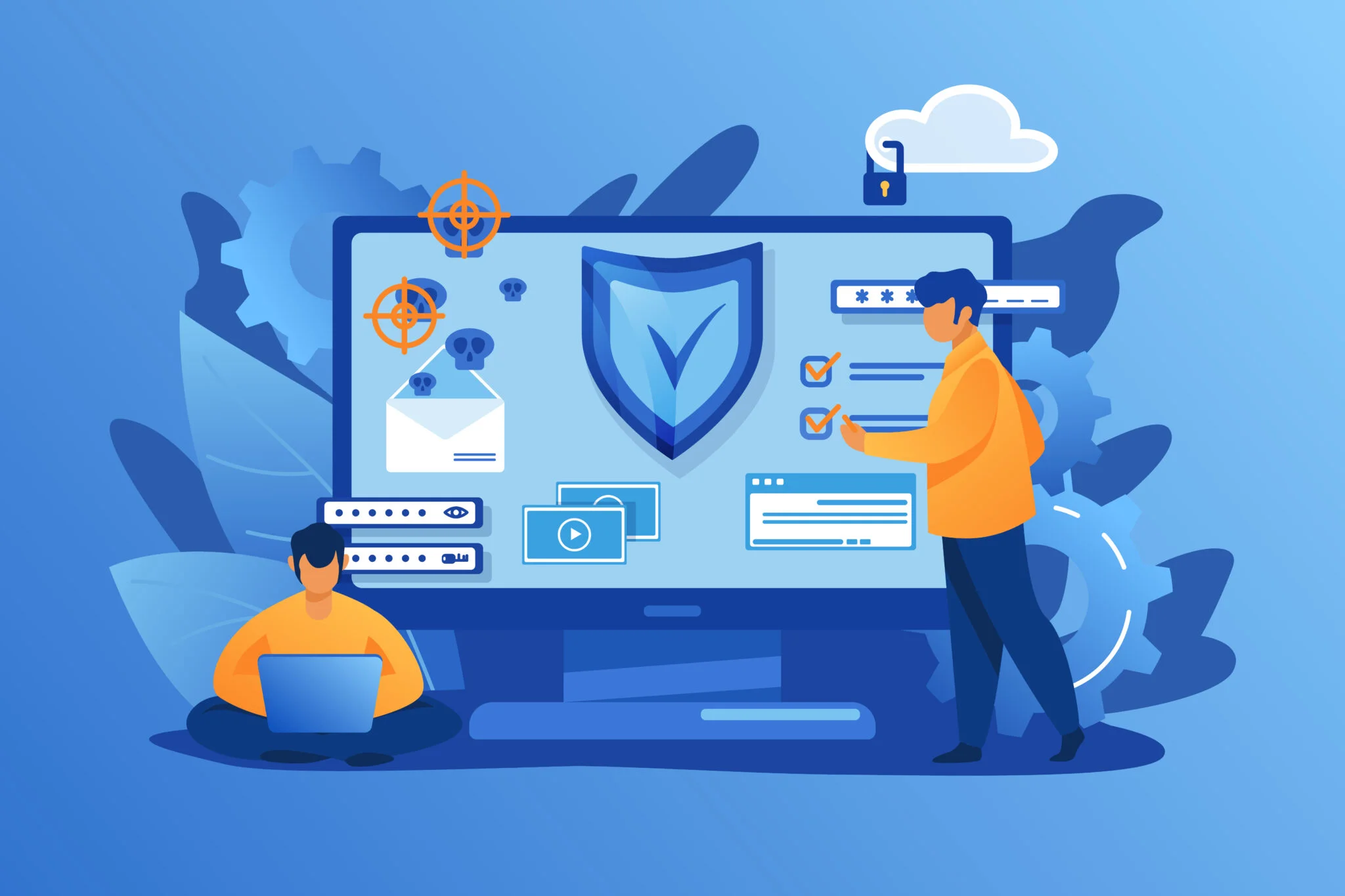How to Protect Your Online Store from Hackers
In today’s digital landscape, running an online store can be highly rewarding, but it comes with its own set of challenges, one of the most significant being cybersecurity. The rampant rise in cyber threats and hacking incidents highlights the importance of robust security measures for WooCommerce-powered online stores.
Understanding the Gravity of WooCommerce Security
In a landscape dominated by e-commerce, safeguarding the security of your WooCommerce-powered online store isn’t merely a choice—it’s an imperative. Hackers are perpetually refining their strategies, scouting for weaknesses to breach and gain illicit entry to crucial customer data, payment particulars, and other valuable information. By proactively implementing effective security strategies, you can thwart their efforts and provide your customers with a safe shopping environment.

Strengthening Your Fortress: Top WooCommerce Security Measures
In the digital era, bolstering your protection against cyber threats is of the utmost importance. By adopting a proactive stance towards cybersecurity, you can shield sensitive data, uphold trust, and guarantee the uninterrupted flow of your activities. By embracing these measures, you enhance your organization’s cybersecurity barriers, rendering it substantially more arduous for cybercriminals to infiltrate and jeopardize your invaluable assets. Protecting your digital fortress is an ongoing effort that requires dedication and a comprehensive strategy.
Here’s how to strengthen your fortress:
Regular Software Updates: The Cornerstone of Security
In the dynamic landscape of cybersecurity, outdated software can be your Achilles’ heel. Hackers often exploit vulnerabilities in outdated plugins or themes to gain access to your online store. Regularly updating your WooCommerce platform, themes, and plugins is akin to fortifying the walls of your digital castle against potential invaders. This simple yet crucial step significantly reduces the risk of security breaches. In the realm of digital security, regular software updates stand as a crucial pillar for maintaining a resilient defense against emerging threats. Keeping your software up-to-date not only enhances functionality but also safeguards your digital environment.
Here’s why regular software updates are vital:
Security Patches: Software patches that fix known vulnerabilities are frequently included in updates. Failing to update leaves your systems exposed to exploitation by malicious actors.
Vulnerability Mitigation: Hackers are quick to exploit newly discovered vulnerabilities. Timely updates help mitigate these vulnerabilities before they can be used against you.
Evolving Threat Landscape: Cyber threats continually evolve. Regular updates ensure that your software is equipped to counteract the latest attack methods and techniques.
Data Protection: Updating software safeguards sensitive data from breaches. Whether it’s personal information, financial records, or intellectual property, keeping software current helps prevent unauthorized access.
Implementing Robust Authentication Practices
The first line of defense against unauthorized access is a strong authentication system. Enforcing complex passwords, enabling two-factor authentication (2FA), and limiting login attempts are essential measures to prevent hackers from easily cracking login credentials. These measures create multiple layers of security, making it exponentially harder for cybercriminals to breach your defenses. In the ever-expanding digital landscape, robust authentication practices are a cornerstone of security. By implementing strong authentication methods, you fortify your systems against unauthorized access and protect sensitive information.
Here’s how to establish and maintain robust authentication practices:
Multi-Factor Authentication (MFA): Require multiple factors for user authentication. This could involve something the user knows (password), something they have (security token), or something they are (biometric verification).
Strong Password Policies: Enforce complex password requirements, including minimum length, combination of characters (uppercase, lowercase, numbers, special characters), and regular password updates.
Device-Based Authentication: authenticate users based on the devices they use, requiring additional verification for unfamiliar devices.
Single Sign-On (SSO): Integrate single sign-on (SSO) to allow users access to multiple applications with a single credential. This streamlines access while maintaining security.
Fortifying Network Security
Securing your network infrastructure is pivotal to guarding against hacking attempts. Utilise firewalls, intrusion detection systems, and secure socket layer (SSL) certificates to encrypt data transmission between your store and customers. SSL certificates not only enhance security but also contribute to better search engine rankings, enhancing your store’s credibility. In the interconnected world of technology, fortifying network security is paramount to safeguarding sensitive information and maintaining the integrity of operations. By adopting comprehensive network security measures, you create a formidable barrier against cyber threats.
Here’s how to fortify your network security:
Firewall Implementation: Deploy firewalls to monitor and control incoming and outgoing network traffic. Configure them to filter out unauthorized access and potential threats.
Intrusion Detection Systems (IDS): Install IDS to monitor network traffic for unusual patterns or suspicious activities that could indicate an intrusion.
Intrusion Prevention Systems (IPS): Complement IDS with IPS, which not only detects but also actively blocks and prevents suspicious network traffic.
Network Segmentation: Divide your network into segments, isolating critical systems from less sensitive ones. This limits the potential impact of a breach.
Virtual Private Networks (VPNs): Utilise VPNs to encrypt and secure communication between remote users and your network, especially when accessing sensitive data.
Mitigating Vulnerabilities: Best Practices for WooCommerce Security
Vulnerabilities must be reduced to preserve the security and integrity of systems, software, and websites. The weak points in a system’s configuration, design, or implementation that could be used by an attacker to harm the system.
Here are some strategies for mitigating vulnerabilities:
Conducting Regular Security Audits
Periodic security audits serve as a proactive approach to identifying vulnerabilities before hackers do. Employ professional security experts to assess your store’s security framework, plugins, and payment gateways. By conducting thorough audits, you can address potential weak points and implement necessary fixes promptly. In the dynamic landscape of cybersecurity, conducting regular security audits is a critical practice for maintaining a resilient defense against evolving threats. By systematically assessing your systems, processes, and policies, you can identify vulnerabilities, weaknesses, and areas for improvement.
Here’s how to effectively conduct regular security audits:
Define Objectives: Clearly outline the goals and scope of the security audit. Identify which systems, processes, and assets will be evaluated.
Establish a Framework: Adopt a recognized security framework or standard, such as ISO 27001 or the NIST Cybersecurity Framework, to guide your audit process.
Identify Assets: Compile an inventory of all digital assets, including hardware, software, data, and network components.
Risk Assessment: Evaluate the potential risks associated with each asset. Consider the likelihood of threats and the impact of potential breaches.
Vulnerability Assessment: Utilise scanning tools and techniques to identify vulnerabilities in software, systems, and configurations.
Managing User Privileges
Limiting user access to only necessary areas is a fundamental practice to prevent unauthorized actions. Not all employees or team members require full access to your WooCommerce store’s backend. Assign roles and permissions meticulously to ensure that only authorized personnel can make critical changes, minimizing the risk of internal threats. Effective management of user privileges is a fundamental aspect of upholding a secure digital environment. By ensuring that users are granted the appropriate level of access to systems, applications, and data, you can thwart unauthorized actions and diminish the likelihood of breaches.
Here’s how to manage user privileges effectively:
Role-Based Access Control (RBAC): institute role-based access control (RBAC) to allocate permissions according to users’ roles and responsibilities. This guarantees that users are granted access solely to the resources essential for their designated tasks.
Least Privilege Principle: Adhere to the principle of least privilege, granting users the minimum level of access required to perform their duties. Don’t give out too many powers that an attacker could abuse.
Regular Review: Periodically review user privileges to ensure they remain appropriate. Revise access as roles evolve or when employees change positions.
Access Approval Workflow: Establish a process for approving access requests. This involves verifying that the requested access aligns with the user’s job requirements.
User Provisioning and Deprovisioning: Automate the process of granting and revoking access when users join, change roles, or leave the organization. This reduces the likelihood of oversight.
A Holistic Approach: Safeguarding Customer Data
Safeguarding customer data holds immense significance in today’s digital realm. A comprehensive strategy to protect customer data encompasses the integration of diverse tactics and methodologies aimed at attaining the utmost standards of security and privacy.
Here’s how to achieve this:
Encryption: Shielding Sensitive Information
Data breaches can tarnish your store’s reputation and lead to severe legal consequences. Encrypting customer data, especially payment information and personal details, is non-negotiable. Utilise advanced encryption protocols to render the data unreadable to anyone trying to intercept it, adding a robust layer of protection. By converting data into a scrambled format that can only be deciphered with the appropriate decryption key, encryption ensures confidentiality and integrity, even if unauthorized parties gain access.
Here’s how encryption safeguards your data:
Data Confidentiality: Encryption prevents unauthorized individuals from understanding the content of the encrypted data. Precisely if they acquire credentials, the data stays indistinct without the decryption key.
End-to-end encryption: Execute end-to-end encryption in messaging and communication media. This ensures that only the verified recipients can read the messages.
File and Disc Encryption: Encrypt files and entire disc drives to protect data stored on computers, laptops, or external storage devices.
Data Integrity: Data is not altered while transferred, stored, or encrypted, which also protects against unauthorized access. Any tampering would render the decryption process unsuccessful.
Public Wi-Fi Security: Encrypting your communication over public Wi-Fi networks prevents potential attackers from intercepting your data.
Payment Security: Trustworthy Transactions
Protecting payment information during transactions is paramount. Ensure that your WooCommerce store integrates with secure and reputable payment gateways that comply with Payment Card Industry Data Security Standard (PCI DSS) requirements. Display trust badges to reassure customers that their financial information is safe and secure. Payment security is paramount to establishing trust and protecting sensitive financial information during transactions. Whether operating an online store or facilitating electronic payments, ensuring the safety of customer data is crucial.
Here’s how to ensure secure and trustworthy payment transactions:
Secure Payment Gateways: Utilise reputable payment gateways that encrypt sensitive payment information during transmission, safeguarding it from interception.
Payment Card Industry Data Security Standard (PCI DSS) Compliance: Adhere to PCI DSS standards to ensure the secure handling of credit card data, including encryption, access controls, and regular security assessments.
Two-Factor Authentication (2FA): Implement 2FA for payment-related activities, adding an extra layer of security beyond passwords.
Tokenization: Replace sensitive payment data with unique tokens, reducing the risk of exposing actual payment information.
SSL/TLS Encryption: Employ SSL/TLS encryption to protect data transmitted between the customer’s browser and your website, preventing data interception.
Staying Vigilant: Ongoing Monitoring and Response
Maintaining the security of your systems and data requires a continuous effort of monitoring and swift response to potential threats. Staying vigilant through ongoing monitoring and rapid response is a cornerstone of effective cybersecurity. By proactively identifying and mitigating threats, you reduce the potential impact of security incidents and protect your organization’s sensitive data and systems.
Here’s how to stay vigilant through ongoing monitoring and effective response:
Automated Security Plugins
Leverage the power of automated security plugins tailored for WooCommerce. These plugins offer real-time monitoring, malware scanning, and immediate threat detection. In the event of a security breach attempt, these plugins can take instant action to thwart the attack and notify you of the threat. Automated security plugins emerge as valuable tools to fortify your digital environment without requiring extensive manual intervention. These plugins offer a range of automated safeguards that actively detect and mitigate threats, bolstering your defenses and reducing the risk of breaches.
Here’s how automated security plugins can enhance your protection effortlessly:
Intrusion Detection and Prevention: Automated security plugins monitor network traffic, identifying patterns indicative of potential attacks. They can also proactively block or prevent unauthorized access.
Malware Scanning and Removal: These plugins continuously scan your website or system for malware, promptly detecting and removing any malicious code or files that may compromise your security.
Firewall Protection: Automated firewalls are vigilant sentinels that analyze incoming and outgoing traffic, blocking malicious requests and unauthorized access attempts.
Vulnerability Scanning: Plugins can automatically scan your software, themes, and plugins for vulnerabilities, alerting you to potential weak points that could be exploited.
Brute-Force Prevention: Automated security tools detect and thwart brute-force attacks by limiting login attempts and locking out attackers who attempt to gain unauthorized access.
Regular Backups: Your Safety Net
Despite all precautions, security breaches can still occur. Regularly backing up your WooCommerce store is akin to having a safety net. In the unfortunate event of a breach, you can restore your store to a previous secure state, minimizing downtime and data loss. Regular backups emerge as a fundamental safety net that safeguards your critical data and ensures business continuity. By consistently duplicating and storing your valuable information, you create a shield against data loss, cyberattacks, and unforeseen disasters.
Here’s how regular backups serve as your safety net:
Protection against Hardware Failures: If hardware such as hard drives or servers fails, backups provide a way to quickly restore data to new hardware.
Human Error Mitigation: Accidental deletion, overwriting, or changes to data can be rectified using backups, reducing the impact of human mistakes.
Business Continuity: Backups ensure that your operations can swiftly resume after a data loss event, minimizing downtime and its associated costs.
Disaster Recovery: In the face of natural disasters, fires, or other catastrophic events, backups enable you to rebuild your systems and resume operations.
Version Control: Backups preserve multiple versions of your data, allowing you to revert to a specific point in time before errors occur.
Conclusion: Safeguard Your Prosperity
In the highly competitive realm of e-commerce, the security of your WooCommerce online store isn’t just an optional feature; it’s an essential foundation. By integrating the best practices detailed in this guide, you are constructing a robust defense against hackers and cyber threats. Remember, the investment you make in security today ensures the prosperity and trust of your online store tomorrow. WooCommerce Security: How to Protect Your Online Store from Hackers should be a continuous journey of learning, adapting, and fortifying—a journey that secures not only your business but also the loyalty of your valued customers.


